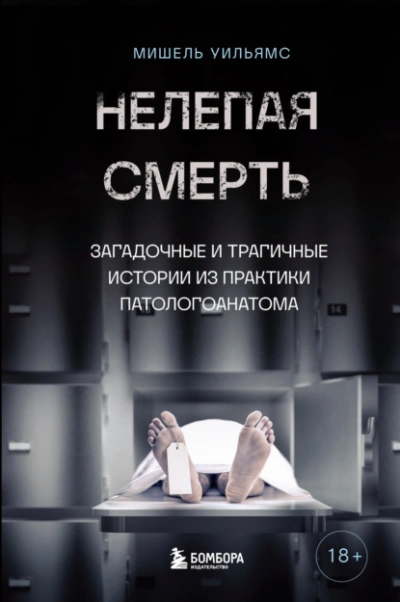Шрифт:
Интервал:
Закладка:
Bridge by drinking himself toward pancreatitis in a Beacon Hill brownstone — to regather himself and orchestrate a profound national dissatisfaction with the ‘passivity’ involved even in D.S.S.-based cable-watching:
What matter whether your ‘choices’ are 4 or 104, or 504? Veals’s campaign argued. Because here you were — assuming of course you were even cable-ready or dish-equipped and able to afford monthly fees that applied no matter what you ‘chose’ each month — here you were, sitting here accepting only what was pumped by distant A.C.D.C. fiat into your entertainment-ken. Here you were consoling yourself about your dependence and passivity with rapid-fire zapping and surfing that were starting to be suspected to cause certain rather nasty types of epilepsy over the longish term. The cable kabal’s promise of ‘empowerment,’ the campaign argued, was still just the invitation to choose which of 504 visual spoon-feedings you’d sit there and open wide for.[164] And so but what if, their campaign’s appeal basically ran, what if, instead of sitting still for choosing the least of 504 infantile evils, the vox- and digitus-populi could choose to make its home entertainment literally and essentially adult? I.e. what if— according to InterLace — what if a viewer could more or less 100 % choose what’s on at any given time? Choose and rent, over PC and modem and fiber-optic line, from tens of thousands of second-run films, documentaries, the occasional sport, old beloved non-’Happy Days’ programs, wholly new programs, cultural stuff, and c., all prepared by the time-tested, newly lean Big Four’s mammoth vaults and production facilities and packaged and disseminated by InterLace TelEnt. in convenient fiber-optic pulses that fit directly on the new palm-sized 4.8-mb PC-diskettes InterLace was marketing as ‘cartridges’? Viewable right there on your trusty PC’s high-resolution monitor? Or, if you preferred and so chose, jackable into a good old pre-millennial wide-screen TV with at most a coaxial or two? Self-selected programming, chargeable on any major card or on a special low-finance-charge InterLace account available to any of the 76 % of U.S. households possessed of PC, phone line, and verifiable credit? What if, Veals’s spokeswoman ruminated aloud, what if the viewer could become her/his own programming director; what if s/he could define the very entertainment-happiness it was her/his right to pursue?
The rest, for Hal, is recent history.
By the time not only second-run Hollywood releases but a good many first-run films, plus new sitcoms and crime-dramas and near-live sports, plus now also big-name-anchor nightly newscasts, weather, art, health, and financial-analysis cartridges were available and pulsing nicely onto cartridges everywhere, the ranks of A.C.D.C.’s own solvent program-pumpers had been winnowed back to the old-movie-and-afternoon-baseball major-metro regional systems of more like the B.S. ‘80s. Passive pickings were slim
now. American mass-entertainment became inherently pro-active, consumer-driven. And because advertisements were now out of the televisual question — any halfway-sensitive Power-PC’s CPU could edit out anything shrill or ungratifying in the post-receipt Review Function of an entertainment-diskette — cartridge production (meaning by now both the satellitic ‘spontaneous dissemination’ of viewer-selected menu-programming and the factory-recording of programming on packaged 9.6 mb diskettes available cheap and playable on any CD-ROM-equipped system) yes cartridge production — though tentacularly controlled by an InterLace that had patented the digital-transmission process for moving images and held more stock than any one of the five Baby Bells involved in the InterNet fiber-optic transmission-grid bought for. 17 on the dollar from GTE after Sprint went belly-up trying to launch a primitively naked early mask- and Tableauxless form of videophony — became almost Hobbes-ianly free-market. No more Network reluctance to make a program too entertaining for fear its commercials would pale in comparison. The more pleasing a given cartridge was, the more orders there were for it from viewers; and the more orders for a given cartridge, the more InterLace kicked back to whatever production facility they’d acquired it from. Simple. Personal pleasure and gross revenue looked at last to lie along the same demand curve, at least as far as home entertainment went.
And as InterLace’s eventual outright purchase of the Networks’ production talent and facilities, of two major home-computer conglomerates, of the cutting-edge Froxx 210 °CD-ROM licenses of Aapps Inc., of RCA’s D.S.S. orbiters and hardware-patents, and of the digital-compatible patents to the still-needing-to-come-down-in-price-a-little technology of HDTV’s visually enhanced color monitor with microprocessed circuitry and more lines of optical resolution — as these acquisitions allowed Noreen Lace-Forché’s cartridge-dissemination network to achieve vertical integration and economies of scale, viewers’ pulse-reception- and cartridge-fees went down markedly;[165] and then the further increased revenues from consequent increases in order- and rental-volume were plowed presciently back into more fiber-optic-InterGrid-cable-laying, into outright purchase of three of the five Baby Bells InterNet’d started with, into extremely attractive rebate-offers on special new InterLace-designed R.I.S.C.[166]-grade High-Def-screen PCs with mimetic-resolution cartridge-view motherboards (recognizably renamed by Veals’s boys in Recognition ‘Teleputers’ or ‘TPs’), into fiber-only modems, and, of course, into extremely high-quality entertainments that viewers would freely desire to choose even more.[167]
But there were — could be — no ads of any kind in the InterLace pulses or ROM cartridges, was the point Hal’s presentation kept struggling to return to. And so then besides e.g. a Turner who kept litigating bitterly via shortwave radio from his equatorial yacht, the true loser in the shift from A.C.D.C. cable to InterLace Grid was an American advertising industry already reeling from the death of broadcast’s Big Four. No significant markets seemed in any hurry to open up and compensate for the capping of TV’s old gusher. Agencies, reduced to skeletal cells of their best and most rapacious creative minds, cast wildly about for new pulses to finger and niches to fill. Billboards sprouted with near-mycological fury alongside even rural two-laners. No bus, train, trolley, or hack went unfestooned with high-gloss ads. Commercial airliners began for a while to trail those terse translucent ad-banners usually reserved for like Piper Cubs over football games and July beaches. Magazines (already endangered by HD-video equivalents) got so full of those infuriating little fall-out ad cards that Fourth-Class postal rates ballooned, making the e-mail of their video-equivalents that much more attractive, in another vicious spiral. Chicago’s once-vaunted Sickengen, Smith and Lundine went so far as to get Ford to start painting little domestic-product come-ons on their new lines’ side-panels, an idea that fizzled as U.S. customers in Nike T-shirts and Marlboro caps perversely refused to invest in ‘cars that sold out.’ In contrast to just about the whole rest of the industry, a certain partnerless metro-Boston ad agency was doing so well that it was more out of ennui and a sense of unlikely challenge that P. Tom Veals consented to manage PR for the fringe candidacy of a former crooner and schmaltz-mogul who went around swinging a mike and ranting about literally clean streets and creatively refocused blame and rocketing people’s waste into the forgiving chill of infinite space.[168]
30 APRIL / 1 MAY YEAR OF THE DEPEND ADULT UNDERGARMENT
Marathe did not quite sleep. They had remained on the shelf for some hours. He thought it a bit of much that Steeply refused even for a brief time to sit down upon the ground. If his persona’s skirt rode up above his weapon, what was the difference? Were grotesque and humiliating undergarments also involved? Marathe’s wife had been in an irreversible coma for fourteen months. Marathe was able to refresh himself without quite sleeping. It was not a state of fugue or neural relaxation, but a type of detachment. He had learned this in the months after losing his legs to a U.S.A. train. Part of Marathe floated off and hovered somewhere just above him, crossing its legs, nibbling at his consciousness as does a spectator at popcorn.
At some times on the outcropping Steeply went farther than crossing his arms, almost embracing himself, chilled but unwilling to comment on the chill. Marathe noted that the gesture of self-embrace appeared convincingly feminine and unconscious. Steeply’s preparations for his returning field-assignment had been disciplined and effective. The feature of complete un-swallowability about M. Steeply as a U.S.A. female journalist — even a massive and unfortunate-looking U.S.A. female journalist — was his feet. These were broad and yellow-nailed, hairy and trollesque, the ugliest feet Marathe had observed anywhere south of 60° N, and the ugliest supposedly female feet of his experience.
Both men were strangely reluctant, somehow, to broach the subject of plans for getting down off the shelf in the utter dark. Steeply didn’t even waste time wondering how Marathe could have gotten up (or down) there in the first place, short of some sort of helicopter drop, which capricious winds and the proximity of the mountainside made unlikely. The dogma around Unspecified Services was that if Les Assassins des Fauteuils Rollents had one Achilles’ heel it was their penchant for showing off, making a spectacle of denying any kind of physical limitation, etc. Steeply had field-interfaced with Rémy Marathe once on a rickety-feeling Louisiana oil platform 50-plus clicks out of Caillou Bay, covered the whole time by armed Cajun sympathizers. Marathe always disguised the boggling size of his arms under a long-sleeved windbreaker. His eyelids were half-closed whenever Steeply turned to look. If he (Marathe) were a cat he would be purring. One hand stayed below the blanket at all times, Steeply noted. Steeply himself had a small and unregistered Taurus PT9 taped to his shaved inner thigh, which was the main reason he was reluctant to sit down on the outcrop-ping’s stone; the weapon was unsafetied.
In the faint lume- and starlight Marathe found the four-limbed American’s high-heeled feet compellingly grotesque, like loaves of soft processed U.S.A. bread being slowly squeezed and mangled by the footwear’s straps. The meaty compression of the toes at the shoes’ open tips, the leather faintly creaking as he bobbed up and down, hugging himself chillily in the sleeveless summer dress, his fleshy bare arms webbed redly with mottle in the chill, one arm luridly scratched. The received wisdom among Québecois anti-O.N.A.N. cells was that there was something latent and sadistic in the Bureau des Services sans Spécificité’s assignments of fictional personae for its field-operatives — casting men as women, women as longshoremen or Orthodox rabbinicals, heterosexual men as homosexual men, Caucasians as Negroes or caricaturesque Haitians and Dominicans, healthy males as degenerative-nerve-disease-sufferers, healthy women operatives as hydro-cephalic boys or epileptic public-relations executives, nondeformed U.S.O.U.S. personnel made not only to pretend but sometimes to actually suffer actual deformity, all for the realism of their field-personae. Steeply, silent, rose and fell absently on the toes of these feet. The feet were also visibly unused to high U.S.A. women’s heels, for they were mangled-looking, deprived of flowing blood and abundantly blistered, and the smallest toes’ nails were blackening and preparing, Marathe noted, in the future to fall off.
But Marathe knew also that something within the real M. Hugh Steeply did need the humiliations of his absurd field-personae, that the more grotesque or unconvincing he seemed likely to be as a disguised persona the more nourished and actualized his deep parts felt in the course of preparation for the humiliating attempt to portray; he (Steeply) used the mortification he felt as a huge woman or pale Negro or palsied twit of a degenerative musician as fuel for the assignments’ performance; Steeply welcomed the subsumption of his dignity and self in the very role that offended his dignity of self … the psychomechanics became too confusing for Marathe, who had not the capacity for abstractions of his A.F.R. superiors Fortier and Broullîme. But he knew this was why Steeply was one of Services sans Spéci-ficité’s finest field-operatives, once spending the better part of a year in magenta robes, sleeping three hours nightly and allowing his large head to be shaved and teeth removed, shaking a tambourine in airports and selling plastic flowers on median strips to infiltrate a cult-fronted 3-amino-8-hydroxytetralin[169]-import ring in the U.S.A. city Seattle.
Steeply said ‘Because this is the thing about the A.F.R. that really gives them the fantods, if you’re talking about fear and what to fear.’ He spoke either quietly or not, that Marathe could determine. The empty expanse they both faced off the shelf sucked all resonance, causing every sound to sound self-enclosed and every utterance to seem flatly soft and somehow overintimate, almost post-coital. The sounds of things said beneath blankets, winter beating at the log walls. Steeply himself appeared frightened, perhaps, or confused. He continued: ‘This disinterest, by you guys, it seems, in anything but the harm itself. Just getting the Entertainment out there to hurt us.’
The naked aggression by us.’
Muscles beneath the nylons of the calves bulged and receded as Steeply bobbed. ‘The boys in Behavioral Science say they can’t see any sort of positive political goal the A.F.R. even wants. Anything DuPlessis was having your Fortier work toward.’
‘The U.S.A. fantods are meaning fear, confusion, standing hair.’
The F.L.Q. and Montcalmists — shit, even the most whacked out of Alberta’s ultra-rightists —’
M. DuPlessis had once studied beneath radical Edmonton Jesuits, Marathe reflected.
‘— them we can begin to understand, as political bodies. Them we can more or less get a feel for dealing with.’
Their aggression is clothed in agenda, the Bureau of you perceives.’
Steeply’s was a thinking face now, in apparent puzzlement. They at least have aims. Real desires.’
‘For themselves.’
Steeply appeared convincingly to ruminate. ‘It’s like there’s a context for the whole game, then, with them. We know where where we stand differs from where they stand. There’s a sort of playing field of context.’
Causing the chair to squeak, Marathe again rotated two fingers of a hand in the air, which for Québecers signifies impatience. ‘Rules of play. Rules of engagement.’ The other hand was with the Sterling UL machine pistol beneath the blanket.
‘Even historically — the 60s bomb-tossers, the Spic Separatists, the Ragheads —’
- Forgive me, Leonard Peacock - Мэтью Квик - Современная проза
- Казино «Dog Ground» - Андрей Анисимов - Современная проза
- Good night, Джези - Януш Гловацкий - Современная проза
- Африканский фокусник - Надин Гордимер - Современная проза
- Шарлотт-стрит - Дэнни Уоллес - Современная проза
- Рассказы канадских писателей - Синклер Росс - Современная проза
- Два брата - Бен Элтон - Современная проза
- Тропик любви - Генри Миллер - Современная проза







